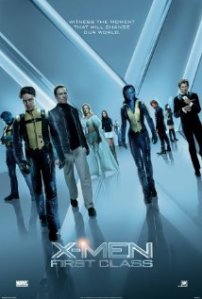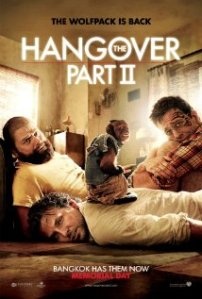
 You know the kind of movies I’m talking about, especially if you’re old enough to remember drive-ins or the Saturday-afternoon movies on TV back in the day. Spectaculars like Them! (1954), The Deadly Mantis (1957), The Black Scorpion (1957), The Fly (1958), and the best bug movie of all time, Alien (1979). The creatures lay waste to lots of desert acreage, whole towns, spaceships, and sometimes even planet Earth. They’re spawned by melting ice-caps, volcanoes, and most of all by nuclear radiation. The movies with the lowest production values are filmed in the desert, the least demanding of locations, and show a lot of screaming close-ups.
You know the kind of movies I’m talking about, especially if you’re old enough to remember drive-ins or the Saturday-afternoon movies on TV back in the day. Spectaculars like Them! (1954), The Deadly Mantis (1957), The Black Scorpion (1957), The Fly (1958), and the best bug movie of all time, Alien (1979). The creatures lay waste to lots of desert acreage, whole towns, spaceships, and sometimes even planet Earth. They’re spawned by melting ice-caps, volcanoes, and most of all by nuclear radiation. The movies with the lowest production values are filmed in the desert, the least demanding of locations, and show a lot of screaming close-ups.
And yet somehow, despite ratcheting up the cheese factor, these movies still delight. This is partly because the best of them knew to keep the creature hidden as much as possible. Instead, we see characters gazing into the camera lens in rapt horror. We see crowds of people screaming and running away. We see a strange shadow on an alley wall. The less we saw of the creature, the more awful it was in our imaginations.
But as poet A.R. Ammons once said in another context, “People like to see the beast.” At some point, you have to show the creature. And that’s when we’d see the giant puppet bobbing at the end of piano wire (as in Them!) or the jittery stop-action figurine (as in The Black Scorpion) or the flying bug looking more like a Volkswagen Beetle covered with shag carpeting (The Deadly Mantis). All of the movies from the 50’s had a grade school science-project look to them. I guess because we hadn’t really seen such effects before, we were enthralled.
In many ways, we’ve returned to the 1950’s. 3-D is back. The new D-box vibrating seats are an update of the short-lived “Percepto” feature installed in some 1950’s theater seats, a buzzer that vibrated under the seat at dramatic moments during The Tingler. Even the title of the newest bug movie, Super 8 is a throwback. Though it’s set in the late 1970’s, it might as well be the 1950’s.
What you need to make a movie like Super 8:
- an idyllic town, one that exudes all-American values
- a collection of rag-tag kids, including the sensitive one, the dorky one, the fat one, and the whiner.
- parents who ignore or just don’t understand their kids
- a creature from another planet who’s just as misunderstood as the kids
If this sounds like ET or The Goonies, that’s because Super 8 has the same formula. Have I given too much away? I don’t think so. Every movie in Hollywood is written according to a formula. It’s whether that formula has been embodied well that determines whether the movie, well, moves us.
I think the reason movies like Super 8 and ET do move us is that the kid at the center of each is a misunderstood outsider who makes an amazing discovery but can’t get anyone to believe him. You see this pattern as early as 1959’s The Blob, where no one will listen to young Steve McQueen as he tries to tell the townspeople about what’s invading their town. The new twist that ET added to the mix is to make the alien just as much a misunderstood outsider as the boy.
The adult actors all do a serviceable job, but they’re about as important as the parents in Peanuts. The kids are the center of this movie. And they are all by turns charming and amusing as needed. The best of them are Joel Courtney, who plays the Henry Thomas role, and Elle Fanning as his love interest. Courtney plays Joe Lamb, who’s been unable to get over the death of his mother. “She used to look at me,” he says, “like really look at me. And I knew I existed.” In many ways, this is a movie about looking, really looking. It’s about seeing and understanding, and about the need to be seen, to have your existence validated (that most Spielbergian of themes).
Of course, the other item Super 8 adds to the mix is a boat-load of special effects. Director J.J. Abrams proved with the Star Trek reboot that he can dish out the CGI with the best of them. Here, among other things, he creates a massive, physics-defying train wreck. A pickup truck runs at full speed into the front of an oncoming freight train. The impact is enough not only to create a huge explosion and not only to derail the train but to send boxcars flying in all directions. And yet, when our heroes run to the pickup after the accident, it’s just banged up a bit, and the driver, mirabile dictu, is still alive. I got to get me one of them pickups! But I suppose if the crash had gone as it actually would have gone—a flattened pickup and a few seconds delay in the train’s schedule—the movie wouldn’t have been half so engrossing.
Because the movie is engrossing. It works the way a good thrill ride works. It shakes you up, knocks you around, blows your hair back, and sucks all the change out of your pocket without doing any permanent damage. It works on the level of exciting bug movie and on the level of touching story about young love and friendship.
Plus it’s loud.
Plus it’s a movie about movie-making. Throughout, the friends keep trying to finish shooting their zombie movie. Don’t miss the credits, where you finally get to see their finished product. It’s one of the highlights of a movie with highlights to spare.
P.S. The Sleeper was awake for every one of the movie’s 112 minutes.






